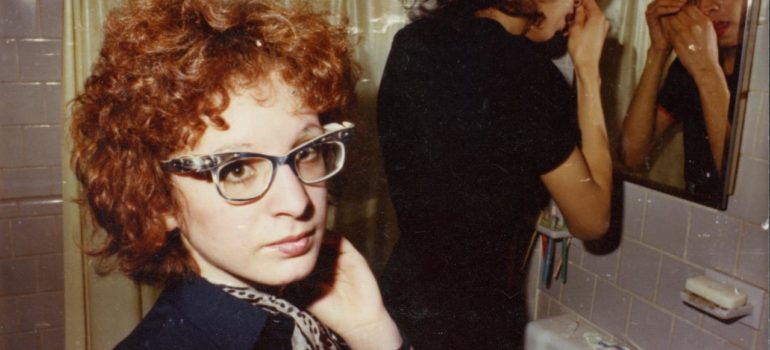When it comes to images of a little guy taking on greater forces, few strike as hard as the sight of Nan Goldin and an accompanying group of supporters arriving at a major museum in the middle of New York to throw empty pill bottles into a decorative pool and stage a ‘die-in’. It sounds so trivial and minimally disruptive on the page, but the context offered by All The Beauty and the Bloodshed, Laura Poitras’ latest portrait of a ‘truth to power’-teller drives home how personal this fight is. It’s also something of a missed opportunity, suffering from overreach despite hitting the targets it absolutely needed to.
The key concern for Poitras has always been truth, and the subjects she’s chosen to film over the years have always yearned to expose it. Depending on your point of view, the subjects she’s profiled may have aged her films and given them more sinister slants than were intended. It’s hard to imagine a time when the likes of Edward Snowden, Glenn Greenwald or Julian Assange weren’t contentious. With Goldin, we get something different; her time to be contentious has been and gone. Since her first photographic exhibition in 1973, at the tender age of 20, Goldin has explored the realities of life in the gay and transgender communities of Boston and New York. The power of her work lies in its ability to pause and look closer at subjects whose identities seem to shift and defy categories, whether by the subject’s choice or the efforts of external forces. Goldin’s work itself defies categorisation; often shown as slideshows, it blurs the line between film and still photography. Poitras ensures we get plenty of exposure to Goldin’s repertoire. Divided into seven sections, each part of the film opens with a montage of Goldin’s work. Spanning from her childhood to the queens of her 20s, to the friends she lost in her 30s and 40s to the HIV/AIDS epidemic. Goldin’s life is one defined by the pain of loss of family, both biological and the families she chose for herself. As made clear in Poitras’ structure and the editing, the ravaging of the gay community by one epidemic made Goldin determined to fight all the harder when another epidemic came to her doorstep. Goldin fought for these people, and her work shows precisely what she was fighting for. Behind the external trappings of their queerness lay people, pure and simple. In these montages, Poitras continues Goldin’s efforts to humanize, to starkly moving effect.
Humanity and pain. These are the forces that drive Goldin’s newer crusade. The pill bottles she and her fellow members of P.A.I.N. (Prescription Addiction Intervention Now) throw represent oxycodone, better known as OxyContin. They’re being flung into a fountain at the Sackler Wing of the Metropolitan Museum of Art. As the owners of the since-bankrupted Purdue Pharma, the Sackler family oversaw the spreading of an opioid epidemic that claimed untold numbers of victims since the drug was made available in the early 1990s. All the Beauty and the Bloodshed represents a change in tack for Poitras. The likes of Citizenfour saw her getting directly involved in the story, her face and camera becoming participants. Here, Goldin is apt to claim to be the auteur as much as Poitras. Most of the footage shot of protests and group meetings come from Goldin, and the photography montages play like a slideshow Goldin herself may have constructed. Poitras gracefully steps out of her subject’s way. Crucially, though, this never gets hagiographic. As the film makes clear, Goldin has been through too much pain not to have earned her audience’s respect.
Yet, for all its anger and compassion, All the Beauty and the Bloodshed feels like a film in need of breathing space. As a person, a character and a force, Goldin has many stories to tell. With a focus on this particular crusade, ATBATB tantalizes with glimpses of the other lives Goldin has lived. While it never feels rushed (which is a credit to the film’s three editors), ATBATB strives to be a definitive document when it could just as easily serve as a jumping-off point. Poitras and Goldin do such a great job of showing how effective simple people power can be; so many other aspects of Goldin’s life could lead to other projects on topics worthy of discussion. Goldin’s experiences with mental health issues, gay rights advocacy and domestic abuse are none-more relevant. Perhaps Goldin herself was satisfied with the reach of the film we’ve got, or (understandably) found exploring these topics any further just too painful. Still, much as we can lament unexplored territory, it’d be churlish to criticize a film for what it isn’t, when what it is is powerful enough. All the Beauty and the Bloodshed is about an empowerer, and it empowers in turn.

